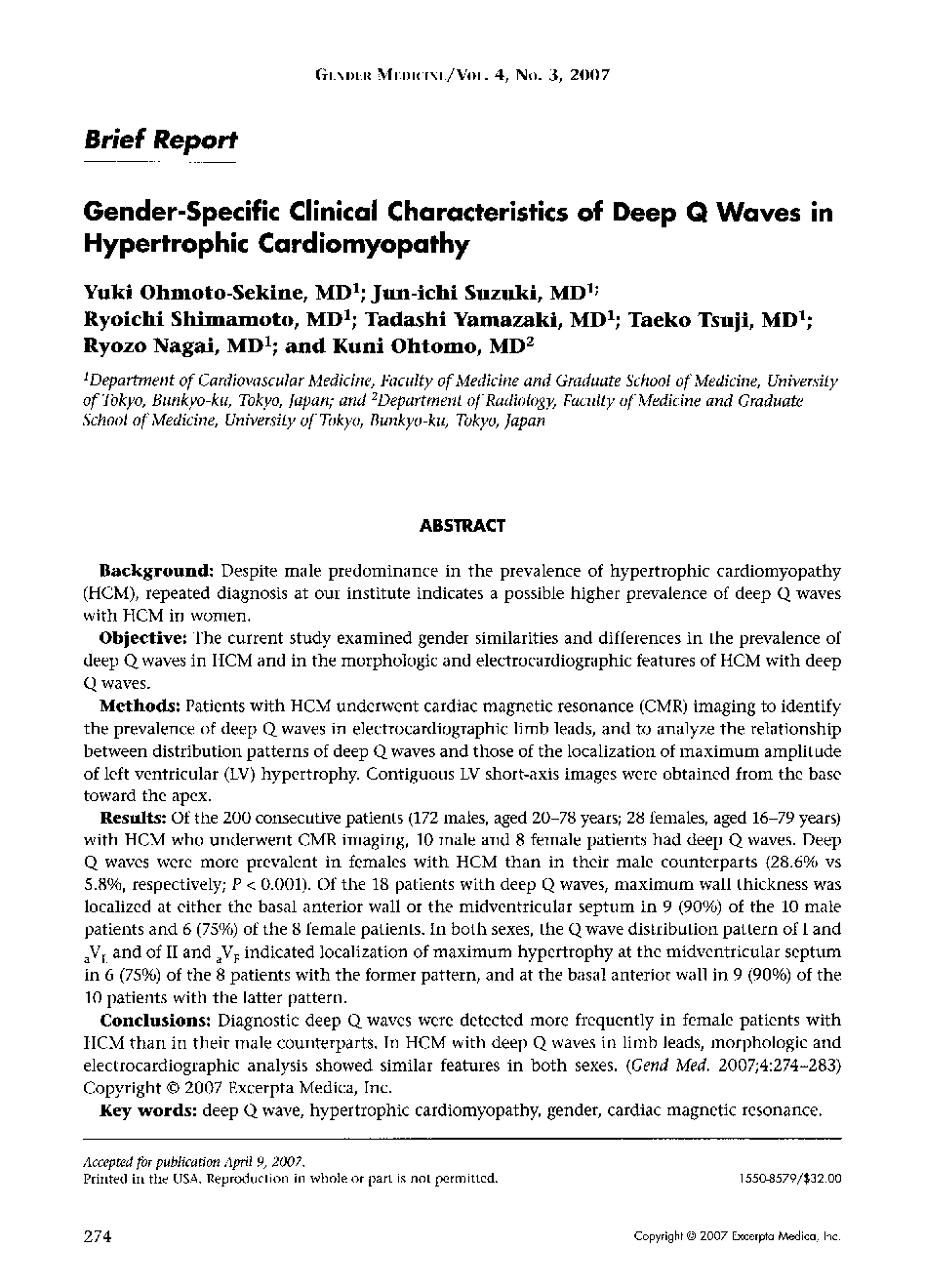| کد مقاله | کد نشریه | سال انتشار | مقاله انگلیسی | نسخه تمام متن |
|---|---|---|---|---|
| 2915981 | 1175605 | 2007 | 10 صفحه PDF | دانلود رایگان |

Background: Despite male predominance in the prevalence of hypertrophic cardiomyopathy (HCM), repeated diagnosis at our institute indicates a possible higher prevalence of deep Q waves with HCM in women.Objective: The current study examined gender similarities and differences in the prevalence of deep Q waves in HCM and in the morphologic and electrocardiographic features of HCM with deep Q waves.Methods: Patients with HCM underwent cardiac magnetic resonance (CMR) imaging to identify the prevalence of deep Q waves in electrocardiographic limb leads, and to analyze the relationship between distribution patterns of deep Q waves and those of the localization of maximum amplitude of left ventricular (LV) hypertrophy. Contiguous LV short-axis images were obtained from the base toward the apex.Results: Of the 200 consecutive patients (172 males, aged 20–78 years; 28 females, aged 16–79 years) with HCM who underwent CMR imaging, 10 male and 8 female patients had deep Q waves. Deep Q waves were more prevalent in females with HCM than in their male counterparts (28.6% vs 5.8%, respectively; P < 0.001). Of the 18 patients with deep Q waves, maximum wall thickness was localized at either the basal anterior wall or the midventricular septum in 9 (90%) of the 10 male patients and 6 (75%) of the 8 female patients. In both sexes, the Q wave distribution pattern of I and aVL and of II and aVF indicated localization of maximum hypertrophy at the midventricular septum in 6 (75%) of the 8 patients with the former pattern, and at the basal anterior wall in 9 (90%) of the 10 patients with the latter pattern.Conclusions: Diagnostic deep Q waves were detected more frequently in female patients with HCM than in their male counterparts. In HCM with deep Q waves in limb leads, morphologic and electrocardiographic analysis showed similar features in both sexes. (Gend Med.Keywords: deep Q wave, hypertrophic cardiomyopathy, gender, cardiac magnetic resonance.
Journal: Gender Medicine - Volume 4, Issue 3, September 2007, Pages 274-283